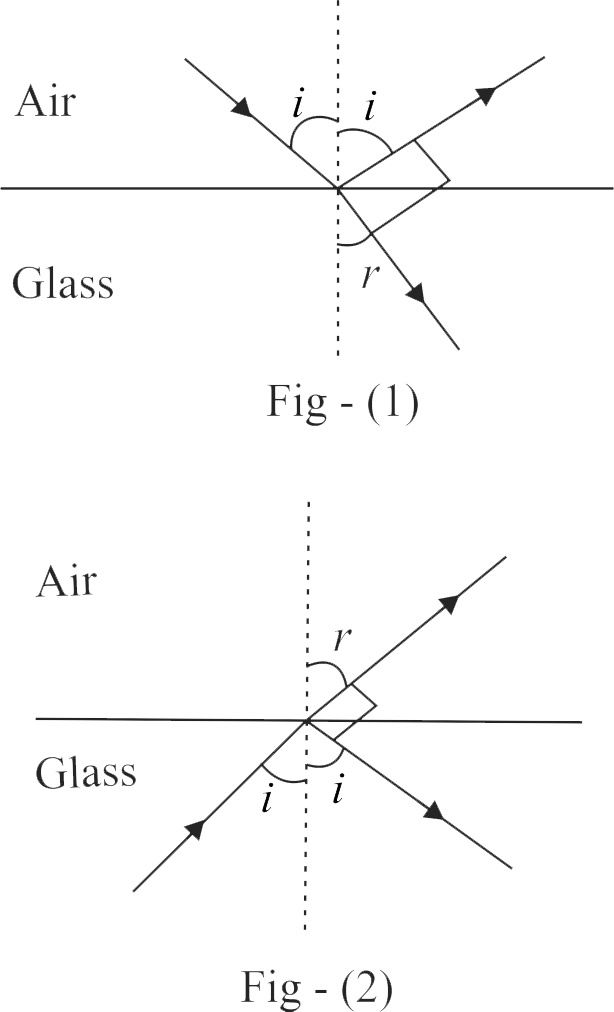367903
Read the Statement - A and Statement - B carefully to mark the correct options given below:
Statement A :
If the Brewster's angle for the light propagating from air to glass is \(\theta_{B}\), then the Brewster's angle for the light propagating from glass to air is \(\dfrac{\pi}{2}-\theta_{B}\).
Statement B :
The Brewster's angle for the light propagating from glass to air is \(\tan ^{-1}\left(\mu_{g}\right)\) where \(\mu_{g}\) is the refractive index of glass.
367903
Read the Statement - A and Statement - B carefully to mark the correct options given below:
Statement A :
If the Brewster's angle for the light propagating from air to glass is \(\theta_{B}\), then the Brewster's angle for the light propagating from glass to air is \(\dfrac{\pi}{2}-\theta_{B}\).
Statement B :
The Brewster's angle for the light propagating from glass to air is \(\tan ^{-1}\left(\mu_{g}\right)\) where \(\mu_{g}\) is the refractive index of glass.
367903
Read the Statement - A and Statement - B carefully to mark the correct options given below:
Statement A :
If the Brewster's angle for the light propagating from air to glass is \(\theta_{B}\), then the Brewster's angle for the light propagating from glass to air is \(\dfrac{\pi}{2}-\theta_{B}\).
Statement B :
The Brewster's angle for the light propagating from glass to air is \(\tan ^{-1}\left(\mu_{g}\right)\) where \(\mu_{g}\) is the refractive index of glass.
367903
Read the Statement - A and Statement - B carefully to mark the correct options given below:
Statement A :
If the Brewster's angle for the light propagating from air to glass is \(\theta_{B}\), then the Brewster's angle for the light propagating from glass to air is \(\dfrac{\pi}{2}-\theta_{B}\).
Statement B :
The Brewster's angle for the light propagating from glass to air is \(\tan ^{-1}\left(\mu_{g}\right)\) where \(\mu_{g}\) is the refractive index of glass.
367903
Read the Statement - A and Statement - B carefully to mark the correct options given below:
Statement A :
If the Brewster's angle for the light propagating from air to glass is \(\theta_{B}\), then the Brewster's angle for the light propagating from glass to air is \(\dfrac{\pi}{2}-\theta_{B}\).
Statement B :
The Brewster's angle for the light propagating from glass to air is \(\tan ^{-1}\left(\mu_{g}\right)\) where \(\mu_{g}\) is the refractive index of glass.

